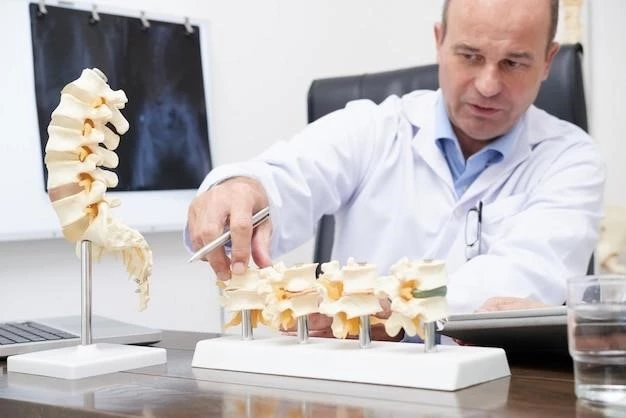Article Plan⁚ Disease ‒ Sacral Plexopathy
Understanding Sacral Plexopathy
Sacral plexopathy involves damage or impairment to the nerves in the sacral plexus, impacting regions like the posterior thigh, lower leg, foot, and part of the pelvis. Typically caused by trauma, nerve compression, or underlying conditions, sacral plexopathy can present with symptoms such as pain, weakness, numbness, and sensory disturbances.
The lumbosacral plexus, comprised of lumbar and sacral spinal nerves, forms the foundation of the sacral plexus. Conditions like neoplastic sacral plexopathy, idiopathic sacral plexopathy, and traumatic sacral plexopathy further showcase the diverse nature of issues that can affect this nerve network.
Diagnosis of sacral plexopathy involves a thorough evaluation of symptoms, often necessitating electrophysiological studies to assess nerve function. Treatment options range from conservative management techniques like physical therapy to surgical interventions aimed at addressing the underlying cause.
Understanding sacral plexopathy is crucial for healthcare professionals to accurately diagnose and manage this condition, improving patient outcomes and quality of life. Stay informed about the latest advancements and research in sacral plexopathy to provide the best possible care to those affected by this nerve disorder.
Anatomy of Sacral Plexus
The sacral plexus, originating from the lumbar and sacral spinal nerves, serves as a vital network of nerves responsible for motor and sensory functions in areas such as the posterior thigh, lower leg, foot, and part of the pelvis. This intricate structure plays a crucial role in facilitating movement and sensation in the lower body.
Comprised of nerve roots from the lumbar vertebrae (L4) to the sacral vertebrae (S4), the sacral plexus is essential for transmitting signals between the spinal cord and the lower extremities. Understanding the anatomy of the sacral plexus is fundamental for healthcare professionals to diagnose and manage conditions affecting this region effectively.
Anatomical knowledge of the sacral plexus aids in identifying potential areas of nerve compression, trauma, or damage that may lead to sacral plexopathy. By comprehending the pathways and functions of the nerves within the sacral plexus, medical practitioners can better evaluate and address issues that affect this crucial nerve network.
Patients experiencing symptoms related to the sacral plexus should seek medical attention to receive a comprehensive evaluation of their condition. By understanding the anatomy of the sacral plexus, both healthcare providers and individuals can work together to manage and treat disorders affecting this intricate network of nerves effectively.
Causes and Risk Factors
Sacral plexopathy can be caused by various factors, including traumatic injuries, nerve compression, underlying medical conditions such as diabetes, tumors affecting the sacral plexus, infections, or inflammatory processes. Understanding the potential causes and risk factors associated with sacral plexopathy is crucial for early detection and appropriate management.
Individuals at higher risk of developing sacral plexopathy include those with a history of traumatic injuries to the lower back or pelvis, individuals with diabetes, cancer patients with tumors affecting the sacral plexus, and those with inflammatory conditions impacting the nerves in the sacral region. Additionally, prolonged pressure on the nerves, as seen in certain occupations or activities, can also contribute to the development of sacral plexopathy.
By recognizing the causes and risk factors associated with sacral plexopathy, healthcare providers can tailor diagnostic approaches and treatment plans to address the underlying issues effectively. Patients experiencing symptoms suggestive of sacral plexopathy should seek medical attention promptly to receive a comprehensive evaluation and personalized care based on the specific factors contributing to their condition.
Understanding the diverse etiologies and risk factors linked to sacral plexopathy empowers both healthcare professionals and individuals to take proactive steps in diagnosing, managing, and potentially preventing the progression of this nerve disorder. Stay informed about the potential causes and risk factors for sacral plexopathy to promote early intervention and optimal outcomes for those affected by this condition.
Symptoms and Clinical Presentation
Sacral plexopathy presents a range of symptoms that can impact daily life significantly. Patients may experience pain, weakness, numbness, or tingling in the lower back, buttocks, and legs; Sensory disturbances, muscle atrophy, and difficulty walking or standing may also occur. The severity of symptoms can vary depending on the underlying cause and extent of nerve damage.
Clinically, individuals with sacral plexopathy may exhibit gait abnormalities, altered reflexes, and muscle weakness in the affected areas. Bladder or bowel dysfunction, sexual dysfunction, and sensory loss in the lower extremities are common manifestations. It is essential to recognize these signs early on to initiate appropriate treatment and prevent further nerve damage.
Seek immediate medical attention if you experience persistent lower back pain, weakness in the legs, changes in bladder or bowel function, or unexplained numbness in the pelvic region. A thorough clinical evaluation, including neurological assessments and imaging studies, is vital to accurately diagnose sacral plexopathy and develop a tailored management plan.
Understanding the varied symptoms and clinical presentation of sacral plexopathy is crucial for both patients and healthcare providers. By recognizing the signs early and taking proactive steps to address them, individuals can improve their quality of life and potentially slow down the progression of this nerve disorder. Stay informed and seek medical guidance if you suspect you may be experiencing symptoms of sacral plexopathy.
Diagnosis of Sacral Plexopathy
Diagnosing sacral plexopathy involves a comprehensive evaluation that includes a detailed medical history, physical examination, and neurologic assessments. Imaging studies such as MRI or CT scans can help visualize the nerve structures and identify potential causes of nerve compression or damage.
Electrodiagnostic tests like nerve conduction studies and electromyography play a crucial role in assessing nerve function and detecting abnormalities in the sacral plexus. These tests help differentiate sacral plexopathy from other nerve disorders by evaluating the speed and strength of nerve signals.
Furthermore, diagnostic procedures like lumbar puncture may be necessary to rule out infections or inflammatory conditions that could be contributing to sacral plexopathy symptoms. Blood tests to check for underlying medical conditions like diabetes or cancer may also be recommended.
Collaborating with neurologists, physical therapists, and other healthcare professionals is essential for a multidisciplinary approach to accurately diagnose sacral plexopathy and develop a tailored treatment plan. Early and precise diagnosis is key to initiating timely interventions and maximizing the chances of recovery.
If you are experiencing symptoms suggestive of sacral plexopathy, it is crucial to seek prompt medical attention for a thorough evaluation and diagnostic workup. By undergoing the necessary tests and assessments, you can obtain a definitive diagnosis and begin appropriate management strategies to address the underlying cause of your nerve disorder.
Treatment Options
When considering treatment options for sacral plexopathy, a multidisciplinary approach is often recommended to address the diverse symptoms and underlying causes of the condition. Treatment strategies may include physical therapy to improve strength and mobility, pain management techniques such as medications or nerve blocks, and assistive devices to aid in mobility.
In cases where nerve compression or trauma is the underlying cause, surgical interventions like nerve decompression or nerve grafting may be considered to alleviate pressure on the affected nerves and restore function. It is essential to consult with neurologists, neurosurgeons, or other specialized healthcare providers to determine the most suitable treatment approach based on individual circumstances.
Additionally, complementary therapies such as acupuncture, chiropractic care, or biofeedback may complement traditional treatment methods to help manage pain and improve overall well-being. Patients should actively participate in their care by following recommended treatment plans, engaging in prescribed exercises, and communicating any changes in symptoms to their healthcare team.
Regular follow-ups with healthcare providers are essential to monitor treatment progress, adjust therapies as needed, and address any emerging concerns. By actively engaging in a comprehensive treatment plan, individuals with sacral plexopathy can optimize their outcomes and enhance their quality of life. Stay informed about the latest advancements in treatment options to make well-informed decisions regarding your care.
Management and Prognosis
Effective management of sacral plexopathy involves a comprehensive approach tailored to the individual’s symptoms and underlying cause of nerve damage. Physiotherapy, occupational therapy, and pain management techniques can help alleviate discomfort and improve functional capacity. Additionally, assistive devices like braces or canes may enhance mobility and independence.
Regular monitoring and follow-ups with healthcare providers are crucial to track progress, adjust treatment strategies, and address any emerging issues promptly. Engaging in regular physical activity and maintaining a healthy lifestyle can support overall well-being and potentially slow down the progression of nerve damage.
Prognosis for sacral plexopathy varies depending on the severity of nerve involvement, the timeliness of diagnosis, and the effectiveness of treatment interventions. Early detection and intervention can lead to better outcomes and improved quality of life for individuals with sacral plexopathy.
It is essential for patients with sacral plexopathy to communicate openly with their healthcare team, adhere to prescribed treatment plans, and actively participate in their care to optimize recovery potential. By staying informed, proactive, and engaged in their management, individuals can navigate the challenges of sacral plexopathy more effectively and strive for the best possible prognosis.
Types of Lumbosacral Plexopathy
Lumbosacral plexopathy encompasses a spectrum of nerve disorders involving the lumbar and sacral plexus, each with distinct characteristics and etiologies. Neoplastic lumbosacral plexopathy, often arising from malignant neoplasms, presents with symptoms like pain, motor weakness, and sensory disturbances, requiring comprehensive cancer management.
Idiopathic lumbosacral plexopathy, characterized by sudden sensory disturbances, weakness, and reflex loss in the lower extremities, poses diagnostic challenges due to its unpredictable onset and course. Traumatic lumbosacral plexopathy results from injuries to the lumbar and sacral plexus, manifesting as pain, weakness, paresthesia, and sphincter dysfunction.
Management of various types of lumbosacral plexopathy requires a tailored approach based on the underlying cause and symptoms. Differential diagnostics and comprehensive evaluations are essential to determine the appropriate treatment strategies for each subtype of plexopathy.
Patients experiencing neuropathic pains, numbness, weakness, or muscle wasting suggestive of lumbosacral plexopathy should seek medical attention for a thorough assessment. By understanding the distinct types of lumbosacral plexopathy and their unique presentations, healthcare providers can provide targeted care to address the specific challenges associated with each subtype.

Neoplastic Sacral Plexopathy
Neoplastic sacral plexopathy refers to nerve damage within the lumbosacral plexus caused by malignant neoplasms, commonly observed in advanced-stage cancer patients. This condition manifests as pain, motor weakness, and sensory disturbances related to the site of plexus involvement.
The clinical presentation of neoplastic sacral plexopathy varies based on the specific location of the nerve damage within the plexus. In a study involving cancer patients with lumbosacral plexopathy, lower plexus involvement was observed in the majority, leading to distinct symptoms such as pain as a prominent early sign.
Effective management of neoplastic sacral plexopathy involves a multidisciplinary approach aimed at addressing the underlying cancer while managing the associated neuropathic symptoms. Pain control, physical therapy, and supportive care are essential components of treatment to enhance quality of life and functional outcomes.
Patients experiencing symptoms suggestive of neoplastic sacral plexopathy, such as persistent or worsening pain, weakness, or sensory disturbances in the pelvis and lower extremities, should seek prompt medical evaluation. Early diagnosis and targeted interventions can help optimize management strategies and improve overall prognosis for individuals with this challenging condition.
Idiopathic Sacral Plexopathy
Idiopathic sacral plexopathy presents a unique challenge due to its sudden onset of sensory disturbances, weakness, and reflex loss in the lower extremities. This condition often lacks a specific underlying cause, making diagnosis and management more complex.
Patients with idiopathic sacral plexopathy may experience abrupt symptoms such as lumbago, inguinal pain, and dysesthesia, requiring thorough evaluation to exclude other potential causes. MRI alterations in the affected regions are uncommonly reported, underscoring the diagnostic complexity of this condition.
Managing idiopathic sacral plexopathy involves a strategic approach focusing on pain control, symptom management, and supportive care. Collaborating with neurologists or specialists experienced in nerve disorders can aid in developing tailored treatment plans aimed at addressing the unique challenges presented by idiopathic sacral plexopathy.
If you suspect you may have idiopathic sacral plexopathy due to unexplained symptoms in the lower extremities, seek prompt medical evaluation for a comprehensive assessment. Early intervention and close monitoring are essential to effectively manage idiopathic sacral plexopathy and improve outcomes for individuals affected by this enigmatic nerve disorder.
Electrophysiological Characteristics
Electrophysiological assessments play a critical role in evaluating lumbosacral plexopathy by examining the function of nerves within the affected regions. In a pure lumbosacral plexopathy, involvement of muscles from multiple root levels and peripheral nerves is typically observed.
During nerve conduction studies, decreased amplitudes of compound action potentials and sensory nerve action potentials may indicate asymmetrical nerve function, providing valuable insights into the extent and severity of nerve involvement in lumbosacral plexopathy.

Electrophysiological findings in lumbosacral plexopathy assist healthcare providers in confirming the diagnosis, assessing nerve damage progression, and guiding treatment decisions. By utilizing these specialized tests, clinicians can tailor management strategies to address the specific electrophysiological characteristics observed in each individual case.
If you are undergoing evaluation for lumbosacral plexopathy, discussing electrophysiological testing with your healthcare team can provide valuable information regarding the functional status of your nerves and contribute to a comprehensive assessment of your condition.
Research and Advances in Sacral Plexopathy
Current research on sacral plexopathy focuses on enhancing diagnostic precision, refining treatment modalities, and understanding the pathogenesis of this intricate nerve disorder. Recent studies shed light on the clinical features, etiologies, and management approaches for different types of lumbosacral plexopathy, aiding healthcare professionals in optimizing patient care.
Advances in electrodiagnostic techniques have improved the characterization of electrophysiological patterns associated with sacral plexopathy, enabling more accurate diagnosis and monitoring of nerve function. These technological advancements play a crucial role in tailoring treatment strategies to individual patients based on their specific electrophysiological characteristics.
Moreover, ongoing research explores innovative therapies, such as nerve stimulation and regenerative medicine, to potentially restore nerve function and mitigate symptoms in individuals with sacral plexopathy. Clinical trials and studies aim to evaluate the efficacy and safety of these novel approaches, offering promising avenues for future treatment options.
Staying informed about the latest research findings and advancements in sacral plexopathy is essential for both healthcare providers and individuals affected by this condition. By keeping abreast of emerging trends and breakthroughs in the field, individuals can actively participate in their care and explore new possibilities for managing sacral plexopathy effectively.
